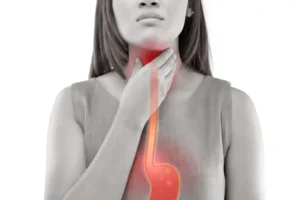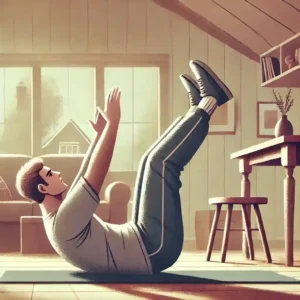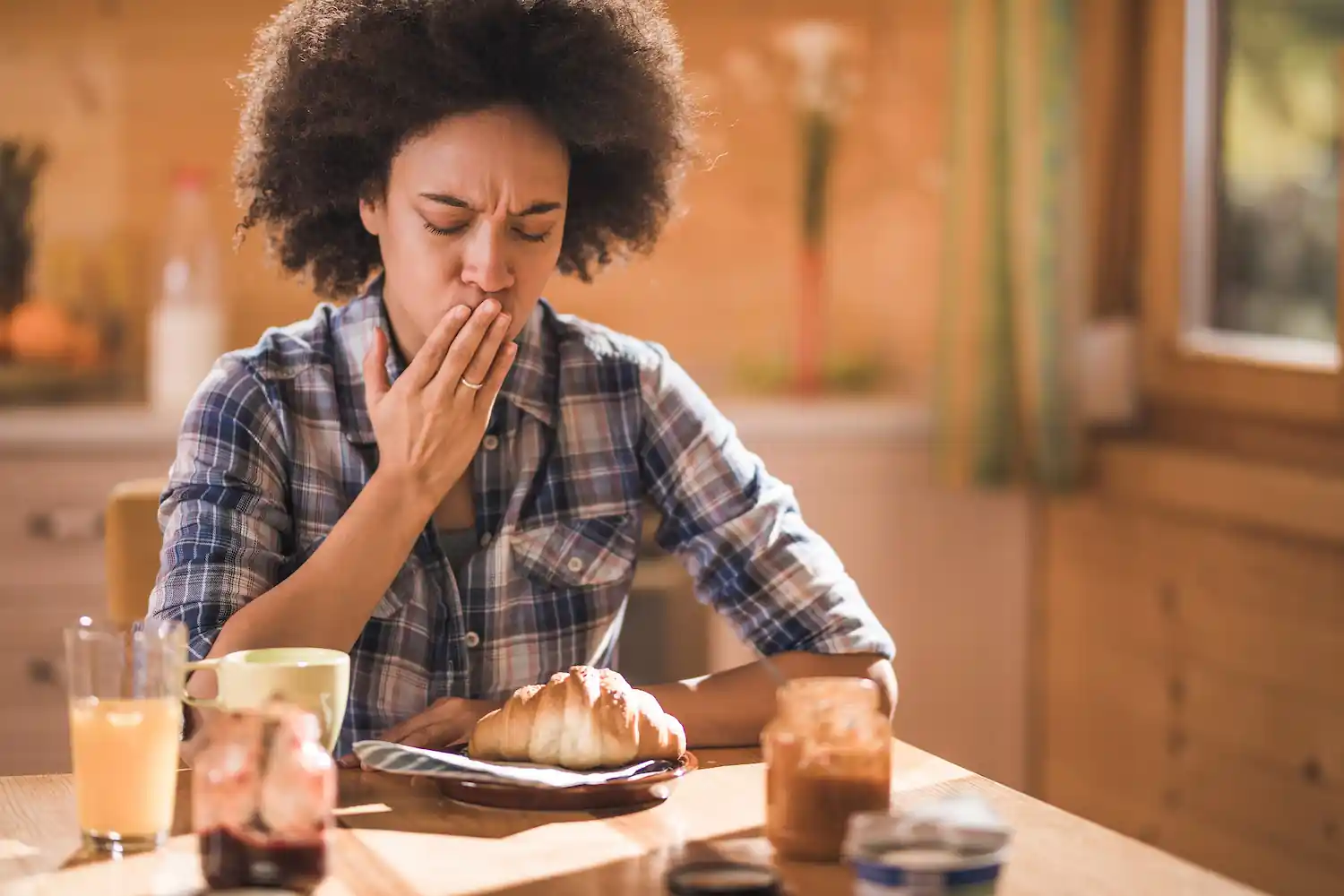10 Secret Ways to Make Yourself Burp
Introduction
Burping, also known as belching, is a natural process that releases gas from the digestive tract, primarily the esophagus and stomach, through the mouth. This release of gas often relieves pressure in the stomach, making us feel more comfortable, especially after eating or drinking. However, sometimes the urge to burp doesn’t come naturally, leading to an uncomfortable build-up of gas and bloating.
Knowing how to make yourself burp can be beneficial when experiencing these symptoms, providing relief from the bloated and often painful sensations caused by trapped gas. This guide covers ten effective techniques to help you burp on command, along with important precautions, dietary advice, and additional methods for managing gas and bloating.
Understanding Burping: Why Do We Burp?
What Is Burping?

Burping, scientifically termed “eructation,” is the body’s natural way of expelling excess gas from the stomach. This process typically occurs when air, swallowed while eating or drinking, builds up in the stomach. When the stomach becomes too full of air, it travels up the esophagus, releasing the gas through the mouth.
When we eat, talk, or swallow quickly, we tend to swallow more air. This accumulation of air builds gas pressure, which needs to be released to avoid discomfort. While burping might seem trivial, it plays a crucial role in relieving discomfort from gas buildup, allowing us to feel less bloated and more comfortable.
Gas and Bloating: The Causes and Symptoms

Gas and bloating often stem from the ingestion of excess air or the breakdown of certain foods in the digestive tract. Swallowing air when eating, drinking, or even chewing gum can introduce small amounts of air into the stomach, leading to pressure.
Common symptoms of gas and bloating include:
- A feeling of fullness or swelling in the abdomen.
- Abdominal discomfort or pain.
- An urge to release gas through either belching or flatulence.
In addition to food and drink, certain habits, such as smoking or consuming carbonated beverages, can increase the likelihood of feeling bloated and needing to burp. Let’s explore why some people struggle to burp and the effects of being unable to release gas effectively.
Why Some People Struggle with Burping: Inability to Burp Explained
Inability to Burp and Its Causes

For some individuals, the ability to burp does not come easily, leading to a condition known as “inability to burp” or “retrograde cricopharyngeus dysfunction.” This condition can make it difficult for the upper esophageal sphincter to release trapped gas, causing bloating and discomfort.
The inability to burp can stem from various factors, including:
- Muscular Dysfunction: The muscle at the top of the esophagus might not relax properly, preventing gas release.
- Swallowing Issues: Swallowing excess air without proper release can lead to gas buildup in the stomach and intestines.
- Medical Conditions: Certain conditions, such as acid reflux, can contribute to gas and bloating, causing an inability to burp naturally.
The Effects of Being Unable to Burp

Being unable to burp can lead to uncomfortable symptoms, such as increased gas and bloating. Over time, this gas buildup can lead to:
- Intense feelings of bloating and pressure in the stomach.
- Digestive discomfort and abdominal pain.
- Feelings of nausea or fullness, which can affect daily activities and mood.
Knowing how to make yourself burp can offer significant relief from these symptoms. Below are ten effective methods to help you burp on command.
10 Secret Methods to Trigger Burping on Command
1. Swallowing Air to Make Yourself Burp

Swallowing air intentionally is one of the simplest ways to make yourself burp. Here’s how to do it:
- Sit up straight and take a deep breath in.
- Close your mouth, press your tongue against the roof of your mouth, and try to “swallow” air without actually consuming any food or drink.
- Repeat this process until you feel a slight pressure in your throat.
- Relax your throat and allow the air to come up naturally, leading to a burp.
This technique can help create an air bubble that moves through your esophagus, triggering a burp.
2. Drinking a Carbonated Beverage

Carbonated beverages, such as soda, sparkling water, or beer, contain dissolved carbon dioxide gas that releases when consumed, helping to build up gas pressure in the stomach.
- Take a few large sips of a carbonated drink.
- Avoid swallowing too quickly to prevent excessive air intake.
- Wait a few moments, and the bubbles in the beverage should help trigger a burp naturally.
Be cautious not to overdo it, as too much carbonation can lead to excess bloating.
3. Gulping Down Water Quickly

Gulping water rapidly can force air into your digestive tract, which may lead to a burp. Here’s how to try this method:
- Take a large mouthful of water and swallow it quickly.
- Repeat the process, drinking in quick successions, to build up gas pressure.
- After a few gulps, pause and wait; you may feel an urge to burp as air rises up.
This technique works best with cold water, as it can be more stimulating to the digestive system.
4. Using an Antacid to Release Gas

Antacids can help relieve acid ingestion and also promote burping by neutralizing stomach acids and reducing bloating.
- Take an over-the-counter antacid, preferably one with simethicone, which helps to release trapped gas.
- Follow the dosage instructions provided on the label.
- Within a few minutes, you should experience a release of gas, potentially resulting in a burp.
Always consult with a healthcare professional if you have frequent issues with gas and bloating before relying on antacids regularly.
5. Sucking Air into the Throat Using the Tongue

This technique involves using your tongue to suck air into your throat, creating an air bubble to induce a burp.
- Open your mouth slightly and place the tip of your tongue against the roof of your mouth.
- Suck in air slowly, feeling it accumulate at the back of your throat.
- Swallow the air gently, which may help create enough pressure to release a burp.
This method requires some practice, but it can be effective once mastered.
6. Chewing Gum to Increase Swallowed Air

Chewing gum causes you to swallow small amounts of air consistently, which can eventually lead to a burp. Here’s how to use this method effectively:
- Chew a piece of gum for several minutes, allowing small amounts of air to enter your stomach.
- Continue chewing until you feel a slight buildup of air.
- Relax, and you may notice the urge to burp shortly afterward.
Be mindful not to overdo it, as swallowing too much air can lead to increased bloating rather than relief.
7. Laying Down and Changing Position Quickly

Gravity and position changes can help trapped gas move around, potentially releasing it as a burp.
- Lie down flat on your back for a few minutes.
- Quickly sit up or stand, allowing the change in position to encourage the movement of gas.
- This shift can sometimes help release trapped air, causing you to burp.
This method is particularly helpful for people who feel bloated and uncomfortable but can’t burp naturally.
8. Using Physical Exercise to Build Up Gas

Physical activity, especially movements that involve jumping or bending, can increase internal pressure and help release gas.
- Try performing light exercises like jumping jacks, jogging in place, or even bending over repeatedly.
- These activities can help gas move within the digestive tract, potentially leading to a burp.
Use caution when attempting this technique, and stop if you feel discomfort or pain.
9. Blowing Air into a Balloon to Induce Burping

Blowing into a balloon requires controlled breathing and can lead to swallowed air, resulting in a burp.
- Grab a balloon and blow into it for a few seconds.
- Inhale deeply, then exhale into the balloon, allowing air to enter the digestive system.
- Repeat until you feel enough air buildup to trigger a burp.
This method works well for people who find it difficult to burp and need a quick solution.
10. Gently Massaging the Stomach

Massaging the abdomen can help relieve trapped gas by applying pressure, encouraging it to move upward.
- Sit or lie down and gently rub your stomach in a circular motion, starting from the lower abdomen and working your way up.
- Apply light pressure as you move your hands, allowing trapped gas to move.
- Continue until you feel an urge to burp.
This technique is also effective for relieving bloating in general, providing relief without swallowing air.
Precautions to Take When Trying to Make Yourself Burp
Avoiding Excessive Air Intake
Swallowing excessive air can worsen gas and bloating instead of relieving it. When attempting any burping technique, remember:
- Control the amount of air you swallow.
- Avoid forcing too much air, as it can backfire and cause greater discomfort.
Understanding the Difference Between Gas Pressure and Other Pain
Gas pressure is usually relieved by burping, but not all stomach discomfort stems from gas. If you feel persistent pain that doesn’t improve with burping, consult a healthcare professional.
Additional Ways to Relieve Gas and Bloating Without Burping
Diet Adjustments to Prevent Gas
Some foods are known to cause gas, while others can help reduce it. Try the following adjustments:
- Limit gas-causing foods: Such as beans, cabbage, and carbonated beverages.
- Incorporate gas-reducing foods: Like ginger, peppermint, and fennel.
Other Methods to Reduce Gas Pressure and Bloating
In addition to dietary changes, try other gentle techniques, such as:
- Herbal teas: Peppermint or chamomile tea can relax the digestive system.
- Warm water: A warm glass of water can ease bloating.
- Abdominal stretches: Gentle stretching can help relieve gas without the need to burp.
Conclusion: The Benefits of Knowing How to Make Yourself Burp
Understanding these techniques can provide relief from bloating and gas pressure, leading to better comfort and improved digestive health. Try these methods safely and consult a healthcare professional for persistent issues, ensuring that you manage gas and bloating effectively.

